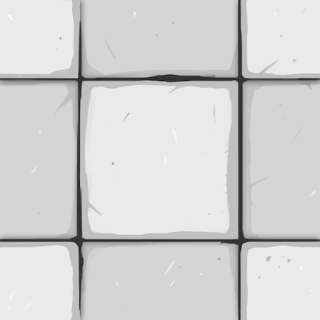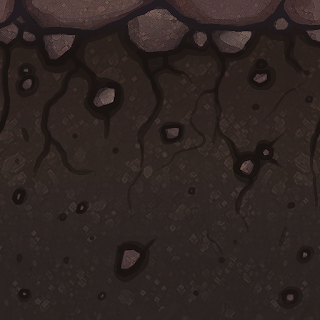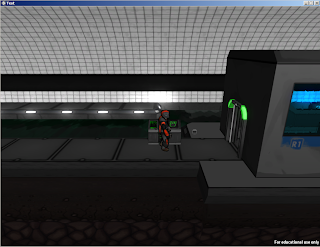Sunday, 13 May 2012
Puzzles
Developing Puzzles for this game started off with Tim thinking up some ideas for what could be achieved with the gadgets we had. After a quick brainstorm of ideas, a handful of puzzles would make their way to Sam. With these in mind Sam would work with Louie to develop these into a working realisation, many of the ideas had to be changed along the way.
Level Design
Our first level designs were simply sewers, this was all the same size with no interchange. We since decided we had to add a variation of rooms. Even if the puzzles were going to be similar due to the limitations of the gadgets we were able to slightly change the environment between them to make it feel different.
Having these different sections of sewer with common themes and styles meant we could create sections of the level and connect them together.
Having these different sections of sewer with common themes and styles meant we could create sections of the level and connect them together.
Gadgets
Gadgets
Having removed the combat element of our game and revolving more on the puzzle gameplay and nonviolence approach, we've developed our gadgets
Character
Having designed a character. Louis then took the concept art done by Sam and started to make a 3d model of this character.
This is a screenshot of the .fbx of the character so doesn't include the textures however we have included the wireframe so you can see how the mesh is built. This model consists of 1,344 polys.
Sound Design
Tim and Tom started work on getting sound Effects. The required noises of a sewer are hard to come by so we had to improvise with some of the noises including recording showers dripping, toilets flushing and the different bubbles you get from blowing through different liquids.
Tim also found a local student studying sound design at BCoT. He was able to help us by making an Minimal Beat Techno track for the background
Tim also found a local student studying sound design at BCoT. He was able to help us by making an Minimal Beat Techno track for the background
Textures
Sam returned to his graphics tablet and photoshop and started to paint textures for the level. This included loads of tileable textures for the floor and walls.
Level Redesign: Segments.
Moving our level design on from what we started with we started to build the level out of segments. This was to keep a universal theme to the environment with all the edges fitting. This would allow us to make the level at key points and extrude the edges out and weld them together.
This was organised by Louie and Dan.
This was organised by Louie and Dan.
Populating The Level
While others set out doing level work Tom started work on population Assets.
These consisted of the random trash you would expect to find in a sewer.
Toms main task was the keep the Poly
count as low as he could.
These consisted of the random trash you would expect to find in a sewer.
Toms main task was the keep the Poly
count as low as he could.
3D Development
With the Puzzles Designed and the Levels created we cracked on with the 3D Level building.
With the first level
designed Dan set about
making the level.
This was one of his first
attempts however we
changed more to the level
since then and this level was just a stepping stone for the build.
With the first level
designed Dan set about
making the level.
This was one of his first
attempts however we
changed more to the level
since then and this level was just a stepping stone for the build.
Thursday, 19 April 2012
Monday, 20 February 2012
Friday, 17 February 2012
Level 1 Storyboard
From the interactive menu, you "Enter the Manhole" and through instruction of your boss on the intercom learn how to move around and use your gadgets. The underground of the sewer treatment plant is a larger series of tunnels with a river of waste alongside pipelines of cleaner water. The pathway is to the side and cleaning tanks/filters/fuges get in the way. After much fun and platforming to get to the other side you find a green glob of goo that is the cause of the disturbance you have been sent down to find. It quickly makes a break for it and the you both end up taking lifts to the upper floor a.k.a Level 2.
Our Pitch
"Our game is a 3D side scrolling "Puzzle Platforming/ "Shoot-Em-Up" hybrid with the gameplay of little big planet mixed with metal slug." -Timoxc
This is the Rip-o-matic used to illustrate our idea in out pitch. This is first an explanation of the character you will play as. An engineer/ plumber at a sewage treatment plant, harassed by his mean boss, but a bad man when it comes to the sewer packed with gadgets and balls of steel you go down talking to your boss on the intercom. Suddenly the video shifts to a idea of the gameplay using a mix of several games to try and show how the movement is done and the use of gadgets for platforming and puzzle solving. Eventually the video gets to show you the goo monsters that are in the sewer that you must kill. Suddenly you get guns, lots of guns, and the game turns into a mad shooter.
Our Brief
Overview
The focus in this unit is on execution - using your developing visual and conceptual skills to produce a quality result. You will work in a team to produce a game outcome, specialising in one of two paths: as a games developer, or games artist. Both pathways are equivalent in terms of the amount of work to be performed, and both will involve creating games concepts and physical prototypes and developing them iteratively.In addition, everyone will submit an individual research folder showing their individual contributions and progress.
The games developer pathway’s outcome is creating a working, playable game and involves all skills learned thus far. This should be a “vertical slice” of the game i.e. a proof of concept, with all key elements of gameplay included, such that a prospective buyer would have a very good sense of the “feel” of the game. The games artist pathway focuses more on concept art, modeling, and visual presentation skills and results in a (non-playable) walk-through that tours the game scene and assets, and a games trailer, such as you’ve seen on YouTube and other sites.
You will also be assessed by your team members, which counts towards a percentage of the final mark.
Main dates:
15th Feb - End of Pre-Production, start of Production. Pitch presentation to tutors (Robin, Evan, Steve)
28th March - End of Production, start of Post-Production. “Industry pitch” presentation - a vertical slice of the game showing progress.
2-15 April: Easter Break
15th May: End of Post-Production. Final hand-in. assessment 15-16 May in LL19
17th May: Open Show
Subscribe to:
Posts (Atom)















































